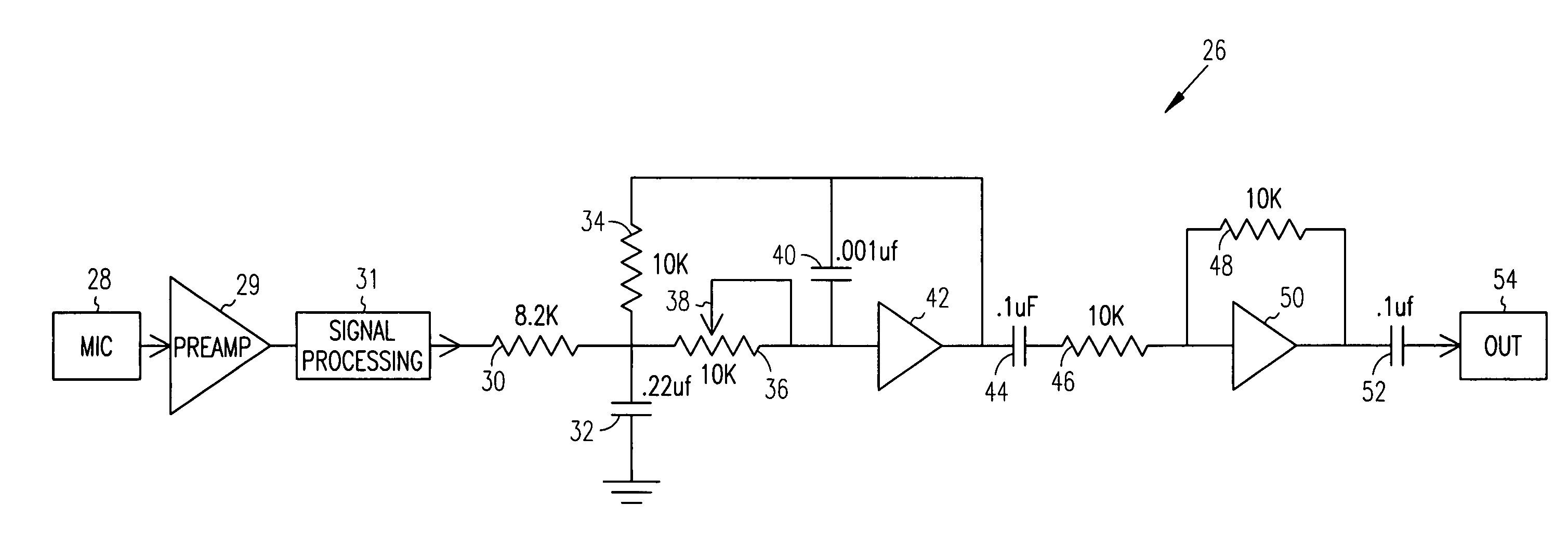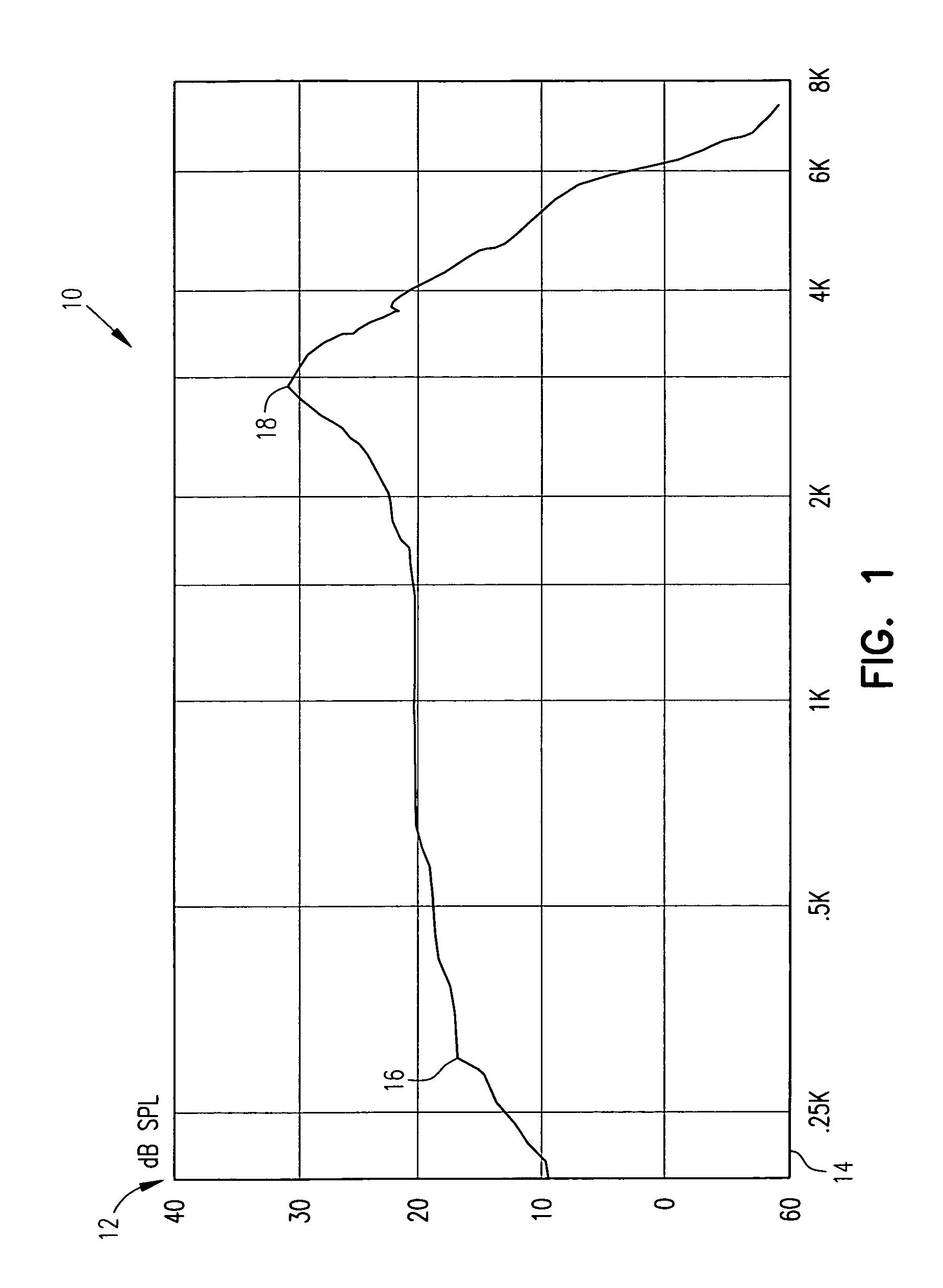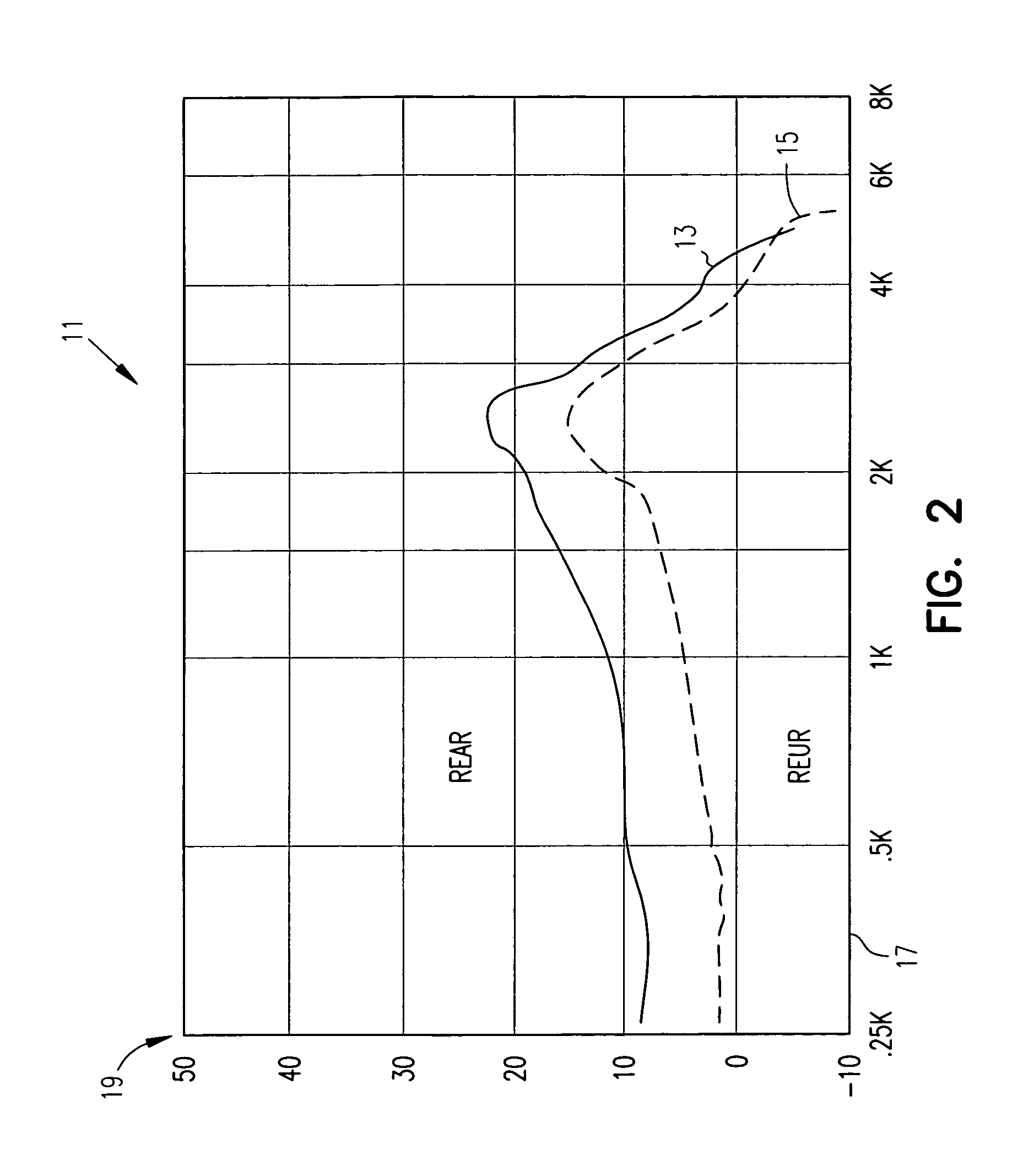Resonant response matching circuit for hearing aid
a technology of resonance response and hearing aid, applied in the field of circuit and method of processing audio frequency signals, to achieve the effect of convenient adjustmen
- Summary
- Abstract
- Description
- Claims
- Application Information
AI Technical Summary
Benefits of technology
Problems solved by technology
Method used
Image
Examples
Embodiment Construction
[0018]The present invention is described in accordance with several preferred embodiments which are to be viewed as illustrative without being limiting. In the preferred mode, the present invention is employed as a totally within the ear hearing aid system having a class D output stage.
[0019]FIG. 1 is diagram 10 showing the 2 cc coupler frequency response of a typical ITE hearing aid with a class D output stage in the hearing aid receiver. Abscissa 14 is a logarithmic plot of frequency in kilohertz. Ordinate 12 shows the gain at each frequency plotted in decibels.
[0020]In a patient having normal middle ear physiology, the ear canal can be thought of as an open organ pipe having a primary resonance at about 2.8 kilohertz and a relatively flat response from about 300 hertz to about 3 kilohertz. As shown in diagram 10, gain curve 16 for the hearing aid is deliberately designed to match this response to replace the peak in gain lost when the ear canal is occluded by an ear mold. Gain pe...
PUM
 Login to View More
Login to View More Abstract
Description
Claims
Application Information
 Login to View More
Login to View More - R&D
- Intellectual Property
- Life Sciences
- Materials
- Tech Scout
- Unparalleled Data Quality
- Higher Quality Content
- 60% Fewer Hallucinations
Browse by: Latest US Patents, China's latest patents, Technical Efficacy Thesaurus, Application Domain, Technology Topic, Popular Technical Reports.
© 2025 PatSnap. All rights reserved.Legal|Privacy policy|Modern Slavery Act Transparency Statement|Sitemap|About US| Contact US: help@patsnap.com



